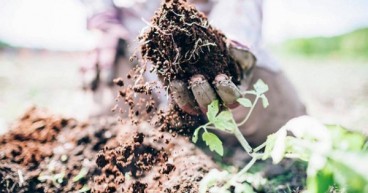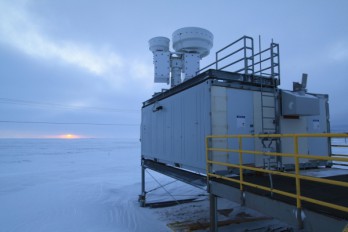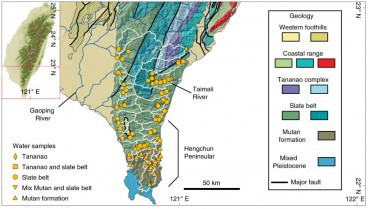Thawing Permafrost: Feeds Arctic Microbes, Climate Change

Scientists at Florida State University are researching the fate of carbon released from during the thawing of long frozen permafrost soils in the arctic. According to their Geophysical Research Letter published this week, microorganisms are rapidly consuming the ancient carbon released from the permafrost, metabolizing it into carbon dioxide, and releasing it back into the environment. A dangerous cycle is underway whereby the regions of the Earth where permafrost is found continue to warm due to climate change and release more carbon which makes its way to the atmosphere as carbon dioxide via microorganisms and further contributes to climate change.
Scientists at Florida State University are researching the fate of carbon released from during the thawing of long frozen permafrost soils in the arctic. According to their Geophysical Research Letter published this week, microorganisms are rapidly consuming the ancient carbon released from the permafrost, metabolizing it into carbon dioxide, and releasing it back into the environment. A dangerous cycle is underway whereby the regions of the Earth where permafrost is found continue to warm due to climate change and release more carbon which makes its way to the atmosphere as carbon dioxide via microorganisms and further contributes to climate change.
“When you have a huge frozen store of carbon and it’s thawing, we have some big questions,” said Robert Spencer, assistant professor of oceanography at Florida State. “The primary question is when it thaws, what happens to it? Our research shows this ancient carbon is rapidly utilized by microbes and transferred to the atmosphere, leading to further warming.
Spencer’s research provides an answer to a long-standing discrepancy. Scientists proved years ago that permafrost was thawing and releasing carbon but no evidence of that carbon was ever found in the mouths of major rivers in the Arctic. Spencer and his team collected hundreds of water samples throughout Siberia, analyzing carbon sources in each. Based on the data, unique compositional features of the carbon make it very attractive to microorganisms and so they quickly consume it and release it as carbon dioxide.
Source: Florida State University
Source: Florida State University
Want to read more like this story?

Carbon sequestration in soils cannot fix climate change to the extend it was thought to
Nov, 01, 2016 | NewsSoil as carbon storehouse needs to be part of, not the whole solution Soil as carbon storehouse n...

The First Industrial-Scale Plant For Capturing Carbon Dioxide
Oct, 27, 2015 | NewsClimeworks AG develops the first plant for Carbon Capture carbon dioxide directly. Climeworks AG...

Arctic infrastructure at risk due to permafrost degradation
Aug, 02, 2021 | NewsAccording to a new study, the infrastructure in Alaska and in multiple regions in the Arctic is thre...

Evidence of Carbon Dioxide's Influence on the Greenhouse Effect
Feb, 25, 2015 | NewsScientists at the US Department of Energy’s Lawrence Berkeley National Laboratory demonstrated...

How geological processes affect the concentration of carbon dioxide in the atmosphere: The case study of Taiwan
May, 11, 2021 | NewsA new study, recently published in Nature Geoscience, focuses on the concentration of carbon dioxid...

Australia Is Forced To Reduce By 30% The Emissions Of Carbon Dioxide
Jul, 20, 2015 | NewsAustralia is required to reduce by 30% the emissions of carbon dioxide by 2025. The decision was mad...
The prospects for carbon-neutral buildings
Oct, 27, 2023 | NewsIn the United Kingdom, buildings account for 33% of greenhouse gas emissions and 40% of global ener...

From Emissions to Solutions: The Rise of Carbon-Storing Highways
Mar, 30, 2025 | NewsThe UK is at a turning point in road construction. As the government shapes its Road Investment Str...
The world’s first carbon concrete building constructed by researchers in Germany
Nov, 17, 2022 | NewsThe first building made of carbon-reinforced concrete was inaugurated in September after two and a...
Trending

Vertical gardens in Mexico City to combat pollution

Saudi Park Closed After 360 Big Pendulum Ride Crashes to Ground, 23 injured

Characteristics of Load Bearing Masonry Construction

Taipei 101’s impressive tuned mass damper

Dutch greenhouses have revolutionized modern farming

Federal court rules Biden’s offshore drilling ban unlawful


